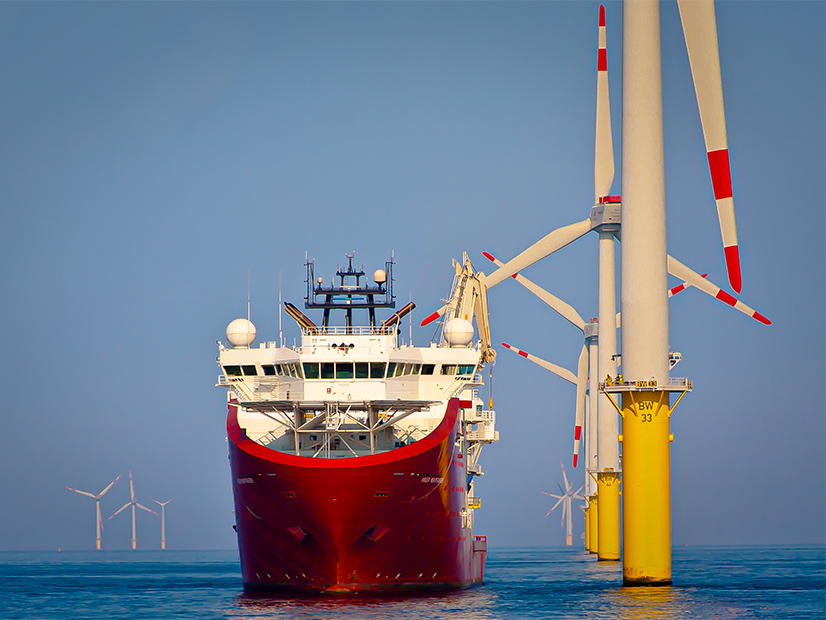
The SouthCoast Wind project could have significant impacts on marine mammals, fisheries and navigation off the Massachusetts coast, according to a draft environmental impact statement.
The U.S. Bureau of Ocean Energy Management on Monday announced the release of the draft EIS for SouthCoast Wind, formerly known as Mayflower Wind, about 20 miles south of the island of Nantucket.
The 127,388-acre lease area has a generation capacity of up to 2,400 MW. SouthCoast Wind Energy, a joint venture of Shell New Energies US (NYSE:SHEL) and Ocean Winds North America (EDP Renewables and ENGIE), announced its new name Feb. 1.
SouthCoast plans to establish grid connections in Massachusetts for the first 1,200 MW, though the company has indicated the terms it negotiated for sale of 400 MW of that electricity have become uneconomical. (See Financial Concerns Continue for Major Northeast OSW Projects.)
With its appendices, the BOEM report totals 1,927 pages. It examines the potential impacts of the project as proposed and of four modified versions, as well as the anticipated result of the status quo if the project were never constructed.
Most of the findings are presented as a range of possibilities, and most of the alternatives resulted in little change in the projections.
Air quality, for example, could see minor adverse impacts from the emissions associated with construction and minor beneficial impacts from less fossil fuel being burned to generate electricity, once the offshore wind turbines come online.
Habitat disturbance could have a negligible to moderate negative impact on marine life forms, but the new underwater hard surfaces could create new habitat, and therefore have a moderate beneficial impact.
Some birds would be killed by spinning turbine blades, others would see their shoreline habitats disturbed, and still others would gain increased foraging opportunities; together, the report rates these as both a minor negative and minor beneficial impact.
Underwater noise and increased risk of collisions with vessels would affect whales and other marine mammals to an unknown degree; the report rates the negative impact as anywhere from negligible to major.
The commercial fisheries would suffer a minor to major impact, depending on the type of fishery; most vessels could adapt their operations to adjust but others would experience significant and lasting disruptions. The cumulative fisheries impact of this and other wind energy projects proposed off the Northeast U.S. coast is rated as major.
The report says the commercial species most affected in the offshore project area is longfin squid. Atlantic surfclam and ocean quahog fisheries told BOEM their operations require a minimum distance of 2 nautical miles (3.7 kilometers) between turbines for safe operations. The report said problems could also arise if mobile species such as Atlantic herring, Atlantic mackerel, squid, tuna and groundfish, are attracted to the wind farm area.
SouthCoast plans up to 147 wind turbine generators standing up to 1,066 feet tall, spaced 1 nautical mile apart in a uniform north-south/east-west layout.
Although state officials have embraced offshore wind as a source of economic development, BOEM projects minor employment and economic impacts from the project, with negative impacts on fishing and recreational pursuits and positive impacts on job creation and tax revenue.
Little net impact is seen on environmental justice, except in the case of tribal nations, because of the potential major impacts on submerged ancient landforms.
Vessel traffic might be impacted by the wind farm, perhaps even to a moderate degree, because of revised navigation routes, port delays and degraded radio and radar signals. A moderate negative impact is foreseen on search and rescue operations, and a major impact is expected on scientific research and surveys.
BOEM, which will publish the draft report Friday in the Federal Register, will accept public comment through April 3. It has scheduled three virtual public information sessions in late March.



